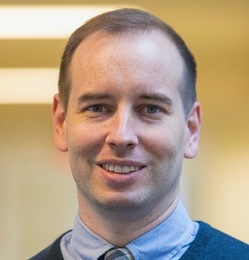Date: Tuesday, September 14, 2021
Time: 11:00 am
Talk Title: Two-dimensional Electronic Order Stabilized in Clean Polytype Heterostructures
Zoom Recording

Abstract:
Dramatic electronic changes are associated with charge density waves (CDWs) where structure, even in 2D materials, requires higher dimensional measurement using scanning / transmission electron microscopy. CDWs are an emergent periodic modulation of the electron density that permeates a crystal with strong electron-lattice coupling. Strong evidence suggests that transformative correlated electron behavior may exist only in unrealized clean 2D materials such as 1T-TaS2. Unfortunately, experiment and theory suggest that extrinsic disorder in free standing 2D layers impedes correlation-driven quantum behavior. Here we demonstrate a new route to realizing fragile 2D quantum states through epitaxial polytype engineering of van der Waals materials. The isolation of truly 2D charge density waves (CDWs) between metallic layers stabilizes commensurate long-range order and lifts the coupling between neighboring CDW layers to restore mirror symmetries via interlayer CDW twinning. The twinned-commensurate (tC-) CDW reported herein has a single metal–insulator phase transition at ~350 K as measured structurally and electronically. Fast in-situ transmission electron microscopy and scanned nanobeam diffraction map the formation of tC-CDWs. This work introduces epitaxial polytype engineering of van der Waals materials to access latent 2D ground states distinct from conventional 2D fabrication.
Here we show the critical temperature for spatially-coherent, commensurate (C-) CDW in 1T-TaS2 can be raised to well above room temperature (~150 K above the expected transition) by synthesizing clean interleaved 2D polytypic heterostructures. This stabilizes a collective insulating ground state (i.e. C-CDW) not expected to exist at room temperature. We show the formation of these spatially coherent states occurs when 2D CDWs are confined between metallic prismatic polytypes. Metallic layers screen impurity potentials to suppress the disordered nearly-commensurate (NC-CDW) phase. At the same time, interleaving disables interlayer coupling between CDWs. This raises the critical temperature of the C-CDW and forms out-of-plane twinned commensurate (tC) CDWs as revealed by scanned nanobeam electron diffraction. These results demonstrate polytype engineering as a route to isolating 2D collective quantum states in a well-defined extrinsic environment with identical chemistry but distinct band structure.
Biography:
Robert Hovden joined the Department of Materials Science and Engineering as an Assistant Professor in Winter 2017.
Hovden’s research can be broadly described as “the photography of atoms—a privilege afforded by precisely sculpted sub-Angstrom electron beams.” Utilizing electron microscopy, he unveils new understanding of how structure at the atomic and nanoscale determines material properties at the macroscale—spanning a wide class of systems including two-dimensional materials, next-generation energy devices, and biominerals.

